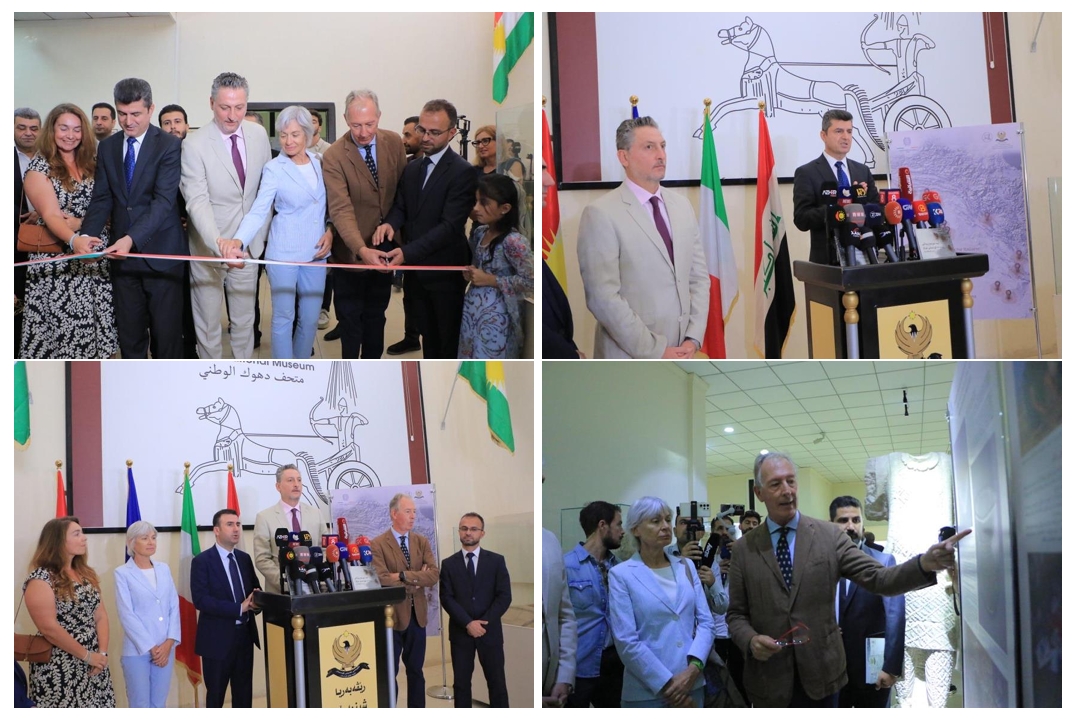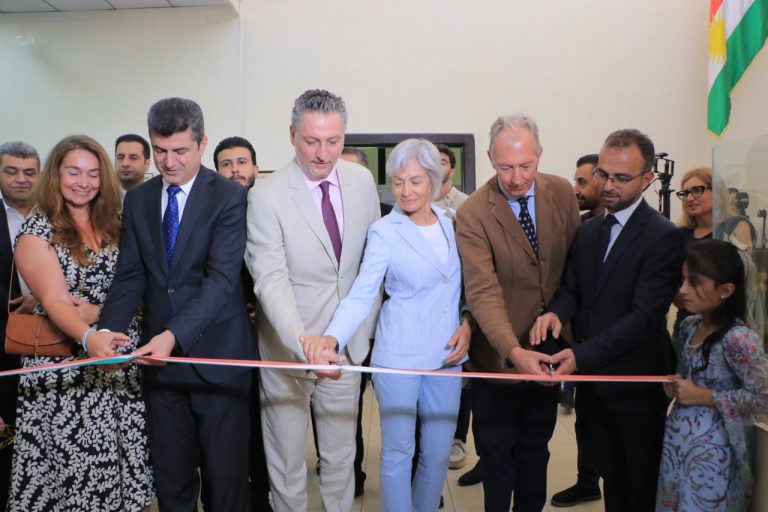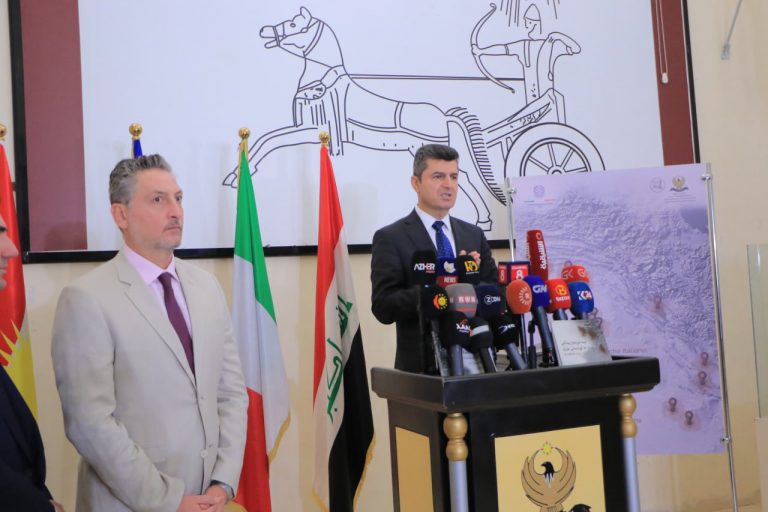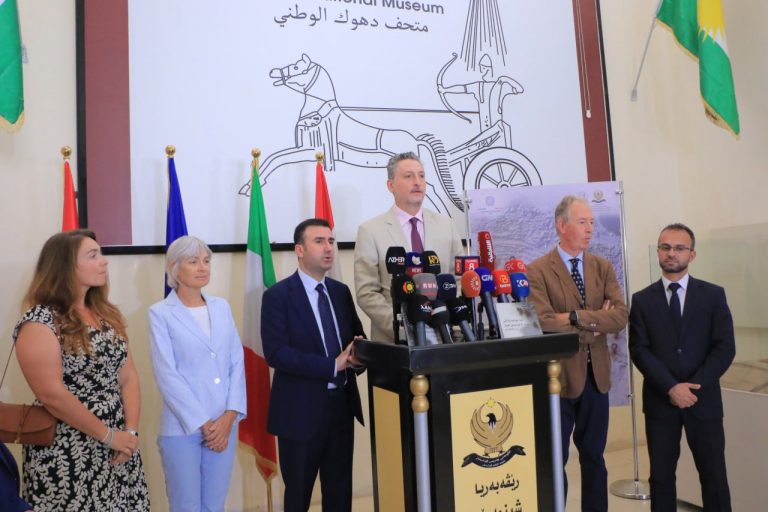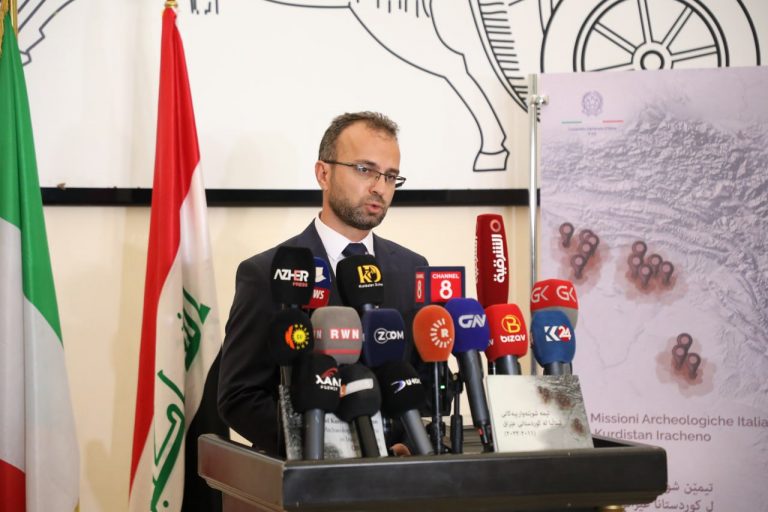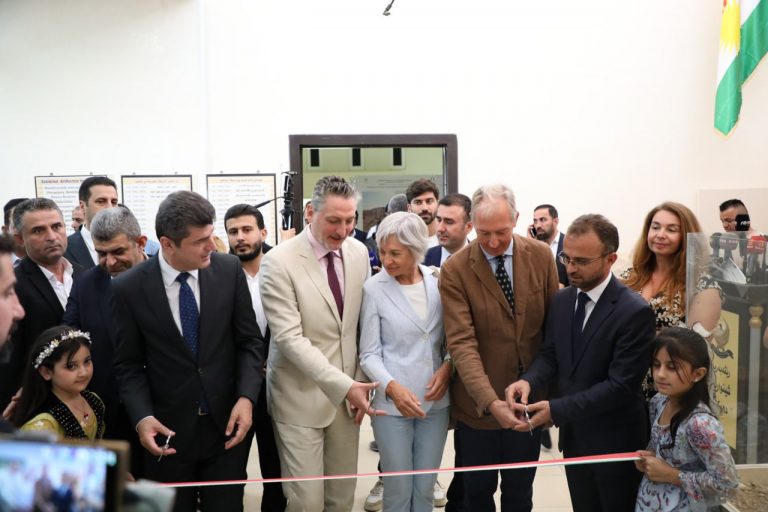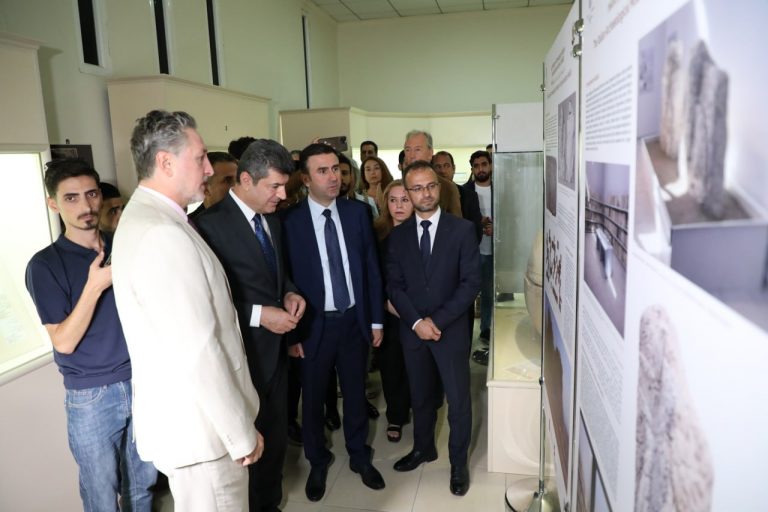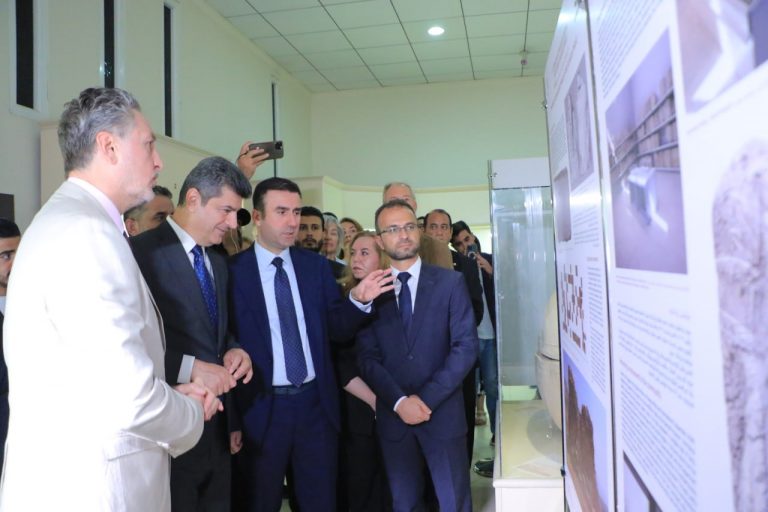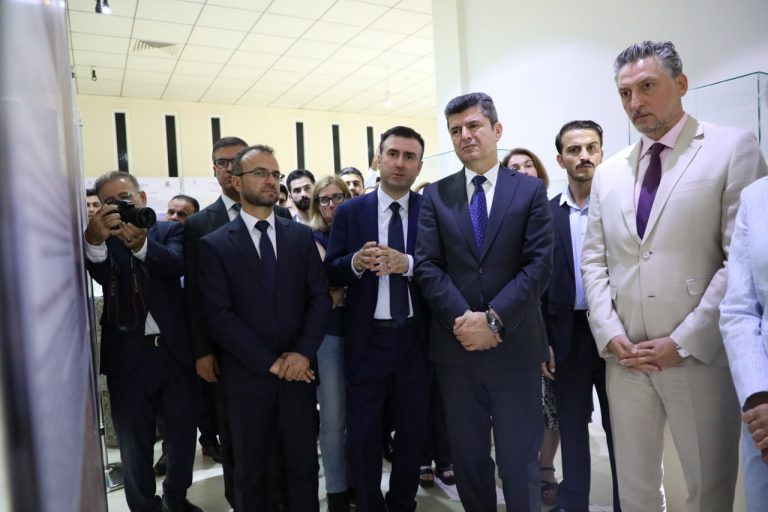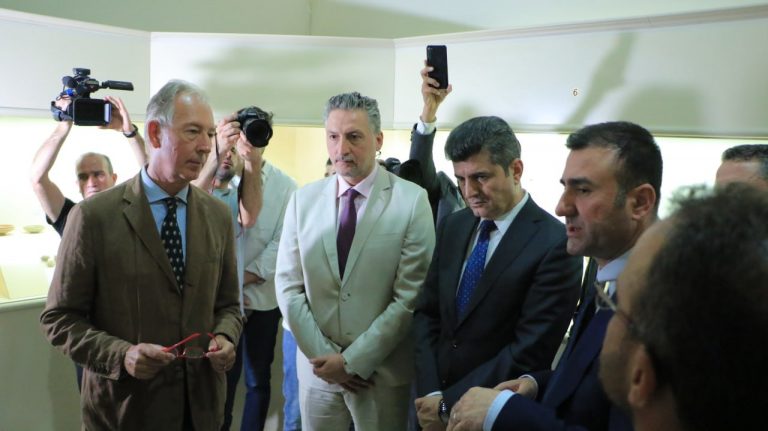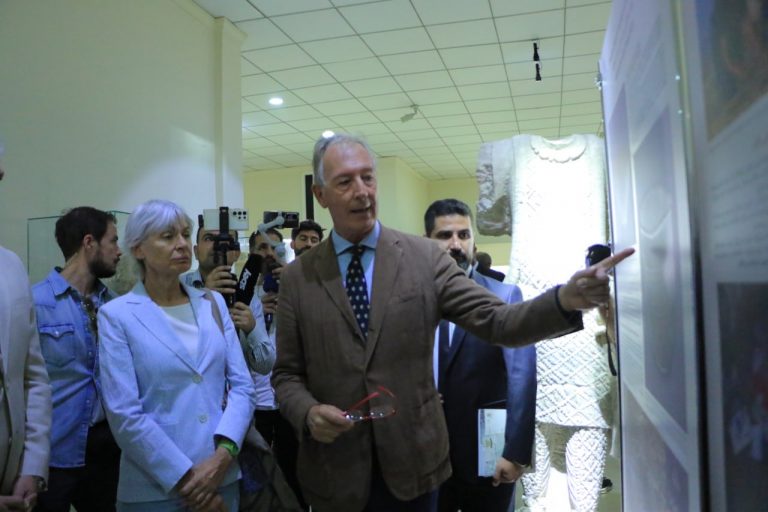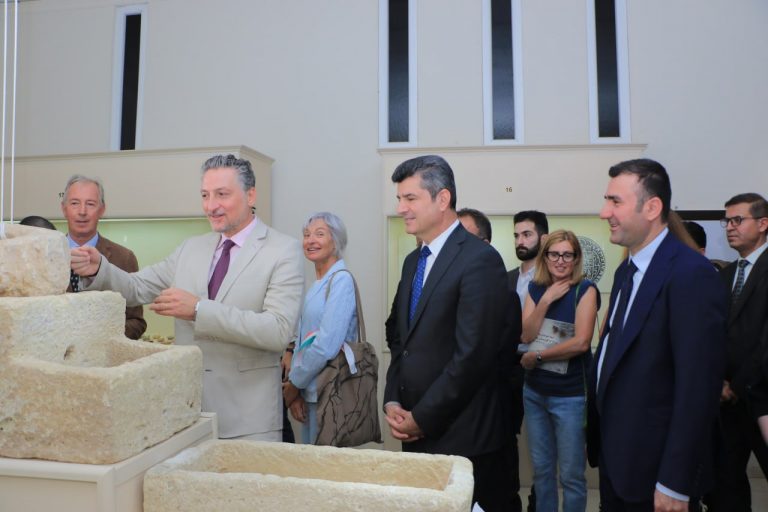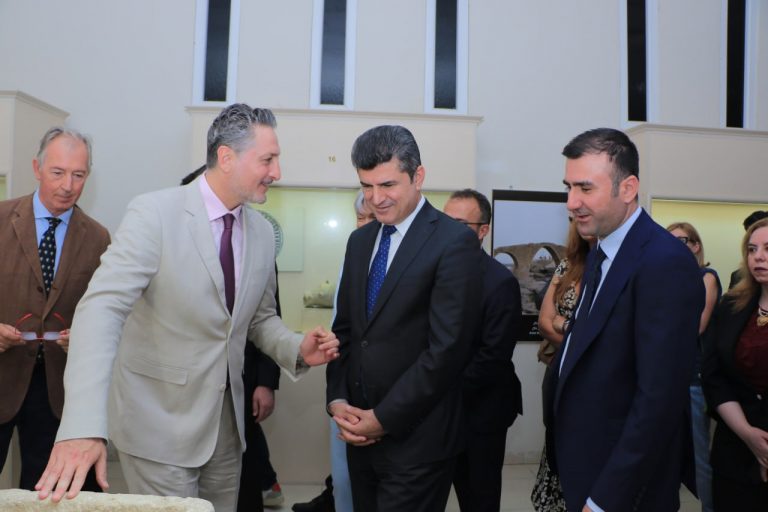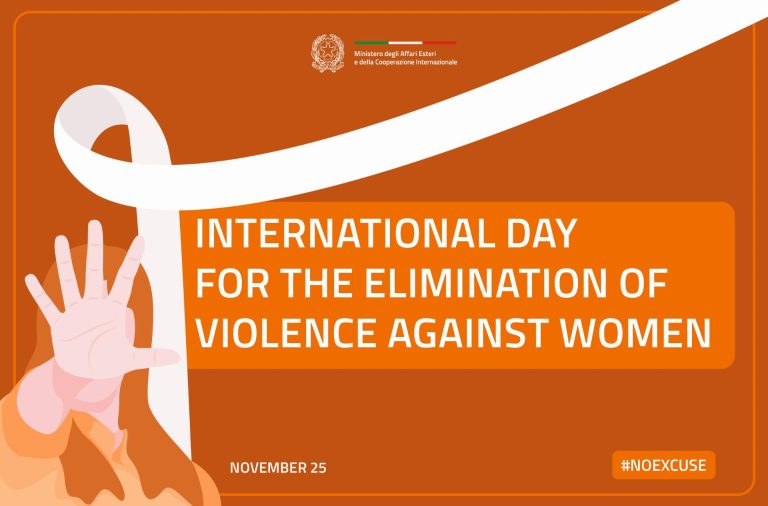After the inaugurations in Erbil and Sulaymaniyah, the exhibition dedicated to the Italian archaeological missions in Iraqi Kurdistan, organized by the Consulate General of Italy, has moved to Duhok at the National Museum, where it will remain open to the public until 24th October. The ribbon was cut on September 19th by Consul General Michele Camerota, Governor Ali Tatar and Director of Antiquities Bekas Brefkani, in the presence of numbers of journalists, and also, with presence of Prof. Morandi-Bonacossi, Director of the well-known Parten mission of the University of Udine and Prof. Tonghini, Director of the mission of the Ca’ Foscari University of Venice in Tell Zeyd, who will coordinate to organize visits to the exhibition with local school groups in the coming weeks.
Consul Camerota began by saying that “in Dohuk we conclude an ambitious path that began last April in Erbil and then continued in Sulaymaniyah. An important and challenging project for the Consulate, but strongly desired and realized thanks to the excellent collaboration with the Italian missions and local counterparts. Archaeology represents the best example of cultural and scientific collaboration with the Kurdistan Region and the whole of Iraq, of which Italy holds the record, with over 20 missions, 11only in Kurdistan. The choice to close the exhibition cycle in Dohuk pays homage to a governorate, where 6 of the 11 excavation and research projects conducted by Italian universities are present at a time of year in which dozens of our archaeologists are present in the field”. “Our contribution – continues the Consul – involves the Italian System in its various components with a strong commitment from the Farnesina which, under the impetus and funding of the Directorate General for Public and Cultural Diplomacy, also counts on contributions provided by the Italian Agency for Development Cooperation”. Camerota finally thanked the local communities for the warm welcome they express for the archaeologists, the authorities and the Kurdish security forces for the constant attention and decisive support they provide.
Governor Tatar, a historian by training, recalled that there are over 1,400 sites of interest registered in the region, and then he expressed great appreciation for the activities of Italian archaeologists, aimed at preserving and enhancing this invaluable heritage and which “contribute to strengthening the solid bonds of friendship with Iraqi Kurdistan and with the population involved in various ways, affirming the value of culture as a driver of tourist attraction and job creation, thanks also to an immediate economic impact that the projects have on local communities“.
Director of Antiquities Brefkani praised “the deep-rooted Italian presence in the governorate and recalled the opening of the first archaeological park in Iraq in Faida, in October 2022, which was followed by the inauguration of the other segment of Khinis, where the University of Udine brought to light fabulous rock reliefs from the Assyrian era and the irrigation system conceived at the time of King Sennacherib (VII BC)“.
***
The exhibition will be open to the public until October 24th. It consists of 31 photographic panels with captions in three languages (Italian, Kurdish and English) and a special catalogue. For further information, please visit the following website: www.archeokri.it




